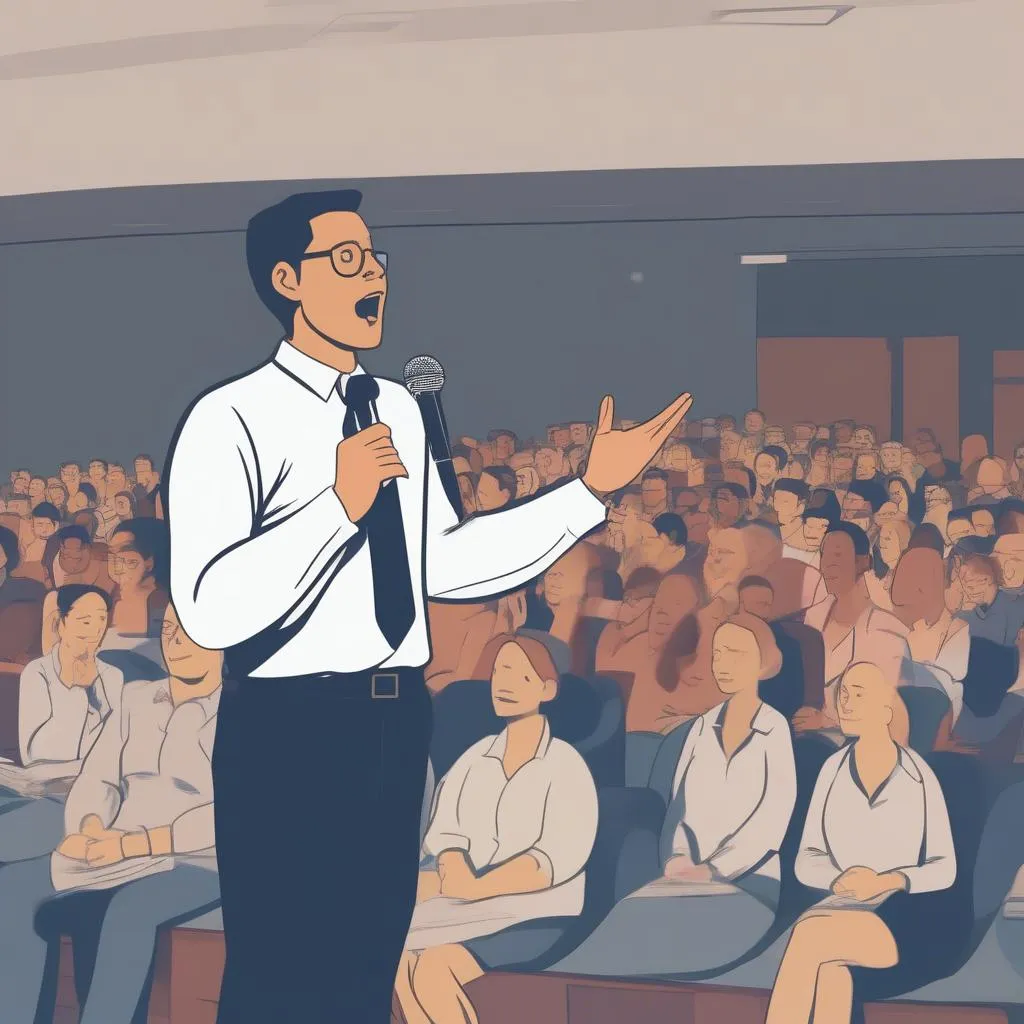“Fire tests gold, hardship tests the strong.” This old proverb highlights the importance of challenges in life. And to succeed, we need to know how to overcome these challenges, especially in the workplace. One of the crucial skills to cultivate is presentation skills. So, how can you deliver an effective presentation skills lesson that captivates the audience and conveys your message effectively? Let’s explore the secrets in this article!
Tip 1: Thorough Preparation – The Foundation of Success
“Look before you leap,” an impressive presentation cannot lack thorough preparation. The first step is to define the objective of your presentation: What do you want your audience to understand and feel after listening to you? Next, research your audience, understand their needs, interests, and level of knowledge to adjust the content accordingly.
Choosing a Presentation Topic
The presentation topic is the core of your presentation. Choose a topic that aligns with your objectives and captures the audience’s attention. An engaging, novel, or practically applicable topic will help you make a good impression.
Building a Presentation Structure
The presentation structure is like a solid framework, making your presentation coherent, easy to understand, and engaging for listeners. A presentation structure includes:
- Introduction: Briefly introduce the topic, capture the audience’s attention with a question, story, image, etc.
- Body: Analyze, explain, and illustrate the topic clearly and logically, using examples, evidence, data, images, etc., to reinforce the content.
- Conclusion: Summarize the main points, reaffirm the objective, inspire, and leave a positive impression on the audience.
Using Supporting Materials
Supporting materials such as slides, videos, images, etc., are powerful tools to help you convey your message more effectively. Use supporting materials appropriately, avoiding overuse, which can clutter your presentation.
Practice Before Presenting
“Practice makes perfect,” practice is the final but equally important step. Practicing helps you become more confident, manage time, and identify and fix errors in your presentation. You can practice in front of a mirror, record videos, or present to friends and colleagues to get feedback.
Tip 2: Presentation Skills – Effective Communication
“Words are but wind, but spoken words are deeds,” communication skills are key to helping you convey your message effectively and make a good impression on the audience.
Using Persuasive Language
Persuasive language plays a crucial role in conveying your message and attracting the audience’s attention. Use simple, easy-to-understand language, avoiding jargon or overly complex language. Additionally, you should use stories, examples, and specific data to illustrate the content of your presentation.
Communicating with Eye Contact and Body Language
Communicating with eye contact, gestures, and expressions are indispensable elements in a successful presentation. Maintain eye contact with the audience, showing confidence, dynamism, and professionalism. Use body language naturally, avoiding unnecessary actions that distract the audience.
Using an Engaging Voice
Voice is the most effective tool for conveying your message. Practice to have a clear, expressive voice that suits the content of your presentation. Vary your pace, intonation, and emphasize key points to create highlights and attract the audience’s attention.
Handling Situations
During your presentation, you may encounter unexpected situations. Stay calm and handle situations flexibly and professionally. If you encounter difficulties, use your learned communication skills to solve problems effectively.
Tip 3: Creating Two-Way Communication
“As you sow, so shall you reap,” a presentation is not just about you conveying a message, but also an opportunity for you to interact and connect with the audience.
Creating Opportunities for Audience Participation
Create opportunities for the audience to participate in your presentation by asking questions, organizing games, or asking the audience to give opinions and share experiences. This helps you create interaction, increase the appeal of your presentation, and helps you capture feedback from the audience.
Handling Questions from the Audience
During your presentation, you may receive questions from the audience. Listen carefully, answer politely, clearly, and professionally. If you don’t know the answer, skillfully redirect or promise to find out more and provide information later.
Connecting with the Audience After the Presentation
Connecting with the audience after the presentation helps you reinforce impressions, build good relationships, and gather more feedback from the audience. You can chat with the audience, share contact information, or invite them to participate in upcoming events.
Advice From Experts
“Nothing is impossible,” Mr. Nguyen Van A, a renowned presentation skills training expert, once shared: “To have an effective presentation skills lesson, you need to be truly passionate and love your topic. Convey your message with heart, sincerity, and enthusiasm, and you will conquer the hearts of your audience.”
Call to Action
Do you want to improve your presentation skills, confidently express yourself, and make a good impression in every meeting, conference, or presentation? Contact us – SOFT SKILLS! We have a team of experienced experts ready to accompany you on your journey to conquer presentation skills. Contact us immediately via phone number: 0372666666 or come to the address: 55 To Tien Thanh, Hanoi to receive advice and register for effective presentation skills courses.
 A lecturer presenting in front of an audience.
A lecturer presenting in front of an audience.
Conclusion
“It’s never too late to learn,” presentation skills are an essential skill in life. Cultivate, practice, and turn presentation skills into an advantage to help you succeed in your work and life. Share this article with your friends, colleagues, and conquer the peaks of presentation skills together!